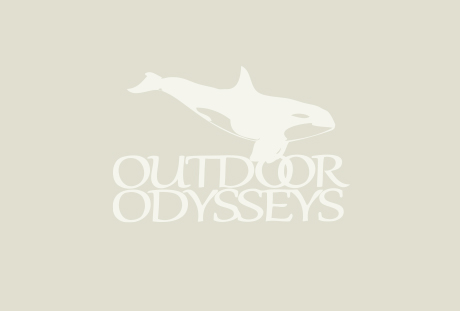Last week on one of our “Eagles and Orcas” one-day sea kayak tours, guests were treated to a visit by an extra-special San Juan Islander. “A whale?” you might wonder. Well, guess again. His name is Tucker, and he is not a whale or a person but a black Labrador retriever whose job it is to sniff out whale poop off the coast of San Juan Island. For the past several years, Tucker has worked tirelessly with a team of researchers from the University of Washington’s Center for Conservation Biology. Their goal? To find and collect samples of whale dung…
“Island Exploration” Tour
Beginning this summer, Outdoor Odysseys will be offering a brand new “Island Exploration” day tour on San Juan Island, where guests will have the opportunity to sample some of the best things that the island has to offer. We’ll spend the day exploring our favorite local spots, including Mount Finlayson, Lime Kiln Point State Park, and the Pelindaba Lavender Farm, and we’ll finish the day with wine tasting at San Juan Vinyards or cider and gin tasting at Westcott Bay Cider.
Summertime on San Juan
As June draws to a close on San Juan Island, summer continues to pick up speed. Last week brought some sunny weather to the island and live music at The Doctor’s Office (a coffee shop—not an actual medical center), the Rumor Mill, and the San Juan County Fairgrounds. Cask & Schooner, a restaurant and pub in town, celebrated its grand re-opening after a multi-year hiatus, and downtown Friday Harbor was abuzz this weekend with visitors who’d come over on the ferry. We here at Outdoor Odysseys are just as excited as the visitors that the season has begun. This Saturday…
Island Visitors
Article about San Juan wildlife from the Seattle Times, brought to you by the folks at Outdoor Odysseys Kayak Tours.
A Day with the Whales: An Interview with an Outdoor Odysseys Guide
This afternoon I sat down with second-year guide Will Bingaman to talk with him about a trip he led earlier this week. Like most of our one-day trips at Outdoor Odysseys, the trip launched from San Juan County Park on the west side of the island, went south to Deadman’s Bay where the group stopped for lunch, and back north to the county park. Will met his four guests at the Friday Harbor ferry terminal on the morning of the trip. Two were from Australia, two from Chicago, and all had been sea kayaking before, though never in the San Juan Islands.
Southern Resident Orca Whales
The Orca, also known as the “killer whale”, is the largest species of the oceanic dolphin family (Family Delphinidae). This toothed predator is one of the most widely distributed sea mammals on earth, and can be found in all of the world’s oceans. Fortunately, Outdoor Odysseys offers eco-friendly kayak tours in one of the world’s best orca whale watching areas
